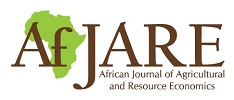Determinants of soybean adoption and performance in Northern Ghana
Soybean has been the world’s fastest growing crop over the last 15 years. Yet, as an untraditional and unfamiliar crop, soybean requires small farmers to move beyond their traditional production practices and marketing arrangements in order to produce a successful crop.
